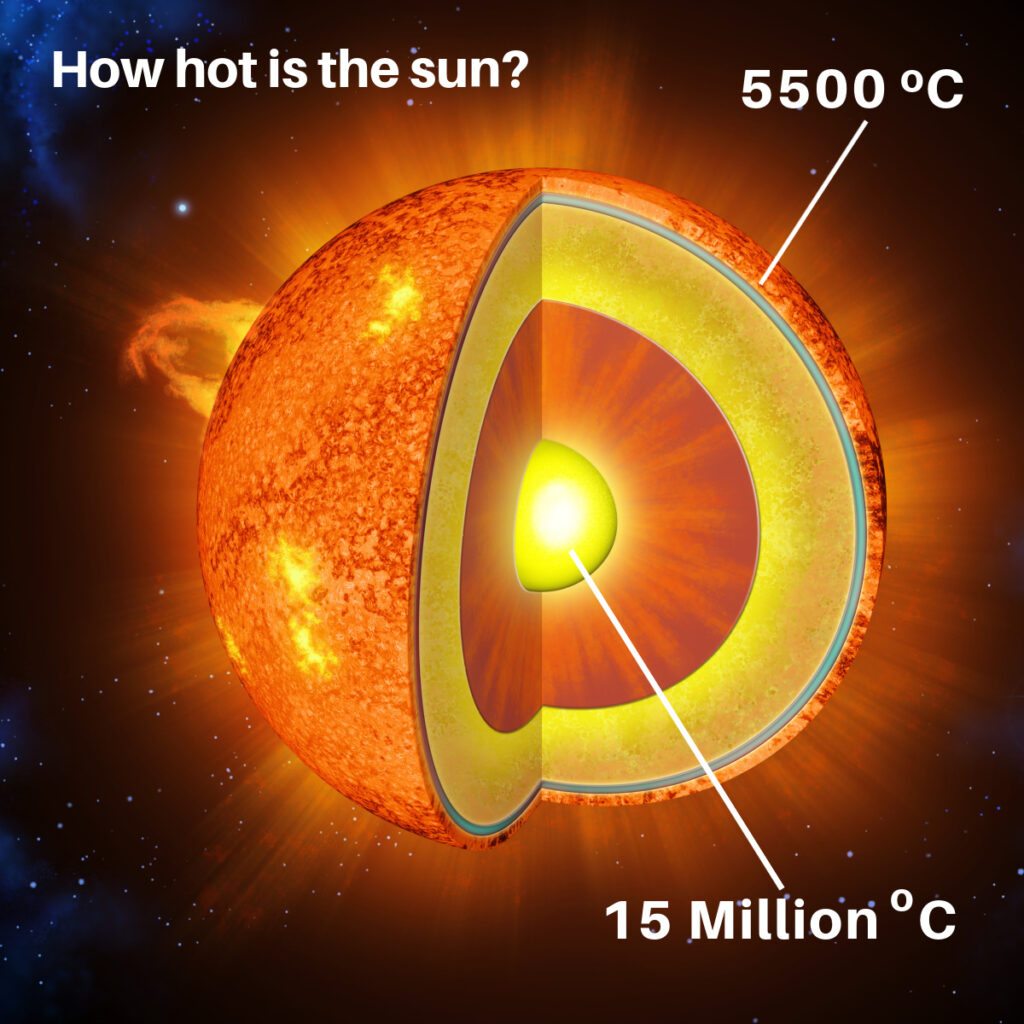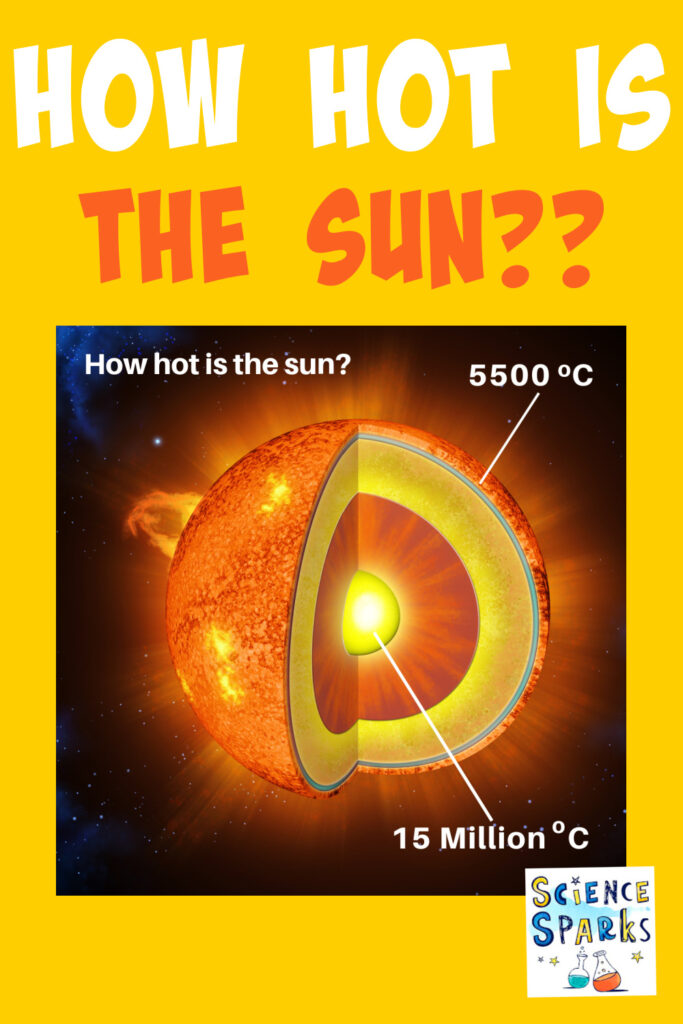Life on Earth depends on the light and heat from the Sun. While the warmth from the Sun gently warms you on a sunny day, the core of the Sun is a mind-blowing 15 million degrees Celsius ( 27 million degrees Fahrenheit), and the surface is 5500 degrees Celsius ( 10000 degrees Fahrenheit).
That’s hot enough to vaporise any material from Earth instantly.

The outermost layer of the Sun’s atmosphere is called the corona. It extends millions of miles into space and is made up of very hot, low density plasma. It’s only visible to humans during a solar eclipse.
The temperature of the corona is hotter than the surface of the Sun ranging between 1 million and millions of degrees Celsius.
Why is the sun so hot?
The Sun’s heat comes from the core. Under huge pressure and gravity, hydrogen atoms are forced together to form helium, releasing massive amounts of energy, which radiates outwards as heat and light. This is nuclear fusion.
Activities for learning about the Sun
Find out how the position of the sun changes during the day with a garden sundial.
Discover how shadows form and draw shadow pictures.
Make a simple model of a solar eclipse.
Discover the science behind a solar eclipse.
Science Buddies has some brilliant sun prints.
Find out the science behind everyday phenomena.

Last Updated on April 24, 2025 by Emma Vanstone

Leave a Reply